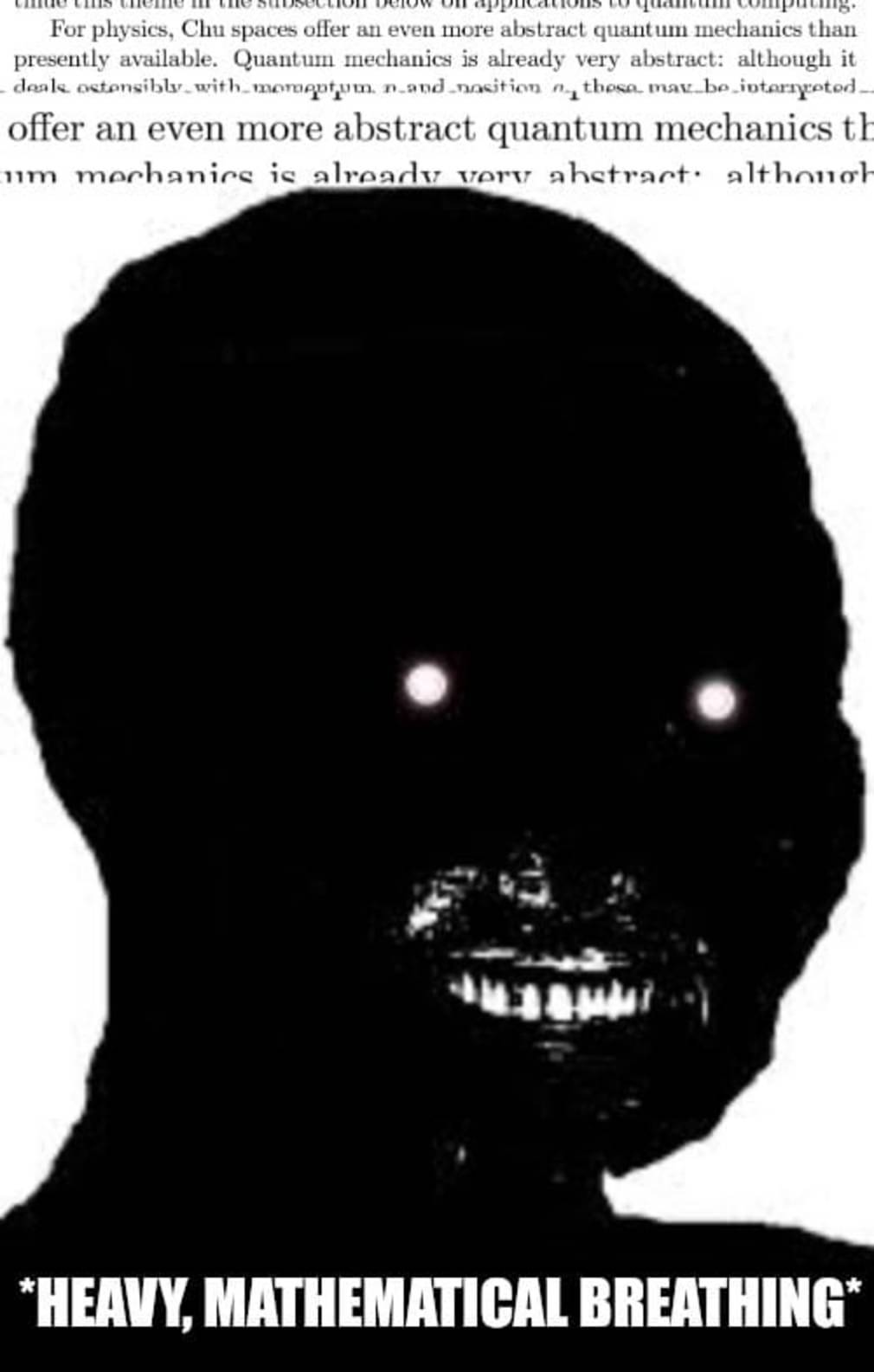this post was submitted on 04 Oct 2024
91 points (96.9% liked)
Science Memes
15731 readers
1676 users here now
Welcome to c/science_memes @ Mander.xyz!
A place for majestic STEMLORD peacocking, as well as memes about the realities of working in a lab.

Rules
- Don't throw mud. Behave like an intellectual and remember the human.
- Keep it rooted (on topic).
- No spam.
- Infographics welcome, get schooled.
This is a science community. We use the Dawkins definition of meme.
Research Committee
Other Mander Communities
Science and Research
Biology and Life Sciences
- !abiogenesis@mander.xyz
- !animal-behavior@mander.xyz
- !anthropology@mander.xyz
- !arachnology@mander.xyz
- !balconygardening@slrpnk.net
- !biodiversity@mander.xyz
- !biology@mander.xyz
- !biophysics@mander.xyz
- !botany@mander.xyz
- !ecology@mander.xyz
- !entomology@mander.xyz
- !fermentation@mander.xyz
- !herpetology@mander.xyz
- !houseplants@mander.xyz
- !medicine@mander.xyz
- !microscopy@mander.xyz
- !mycology@mander.xyz
- !nudibranchs@mander.xyz
- !nutrition@mander.xyz
- !palaeoecology@mander.xyz
- !palaeontology@mander.xyz
- !photosynthesis@mander.xyz
- !plantid@mander.xyz
- !plants@mander.xyz
- !reptiles and amphibians@mander.xyz
Physical Sciences
- !astronomy@mander.xyz
- !chemistry@mander.xyz
- !earthscience@mander.xyz
- !geography@mander.xyz
- !geospatial@mander.xyz
- !nuclear@mander.xyz
- !physics@mander.xyz
- !quantum-computing@mander.xyz
- !spectroscopy@mander.xyz
Humanities and Social Sciences
Practical and Applied Sciences
- !exercise-and sports-science@mander.xyz
- !gardening@mander.xyz
- !self sufficiency@mander.xyz
- !soilscience@slrpnk.net
- !terrariums@mander.xyz
- !timelapse@mander.xyz
Memes
Miscellaneous
founded 2 years ago
MODERATORS
you are viewing a single comment's thread
view the rest of the comments
view the rest of the comments

https://en.m.wikipedia.org/wiki/Chu_space
Quite abstract indeed
I know what most of these words mean, individually. But I do not know what this article is attempting to communicate to me.
More abstract means simpler, but it’s easy to get lost if you weren’t ready to have concrete examples taken away, so examples are offered for each translation below.
1. A chu space is a “binary relation” between two sets. In other words, it can be represented as a matrix of pairs. E.g…
Think of an ordinary table, where each cell relates a row to a column. A common application of chu spaces is computation, so imagine how rows could refer to possible states of a program and columns could represent the events transitioning one to another. Each cell would then represent an incremental change to a particular state.2. Dropping the “closure requirement” means a given point need not be reachable from every other possible point. E.g…
If on a computer you delete a file, but decide instead you wanted to rename it, you might not be able to get to the desired state in a single logical step. First you may have to reverse the last step (deletion) then execute the next (rename). So the set of points representing these steps wouldn’t be closed topologically.3. Dropping the “extensional” requirement means that points can be considered distinct even if their contents are the same. E.g…
In the file system example above, if you rename the file to the current file name, even if it results in no change to the current state, it can still be considered a valid transition to a distinct state.4. Dropping the “two-valued” requirement means we don’t need to know for certain whether or not a point is included in a set. E.g…
First, we say two-valued just to be inclusive of yes/no, T/F, 0/1, -1/+1, and other dyadic pairs. Not requiring it means we can work with values between the two extremes, such as the probability that a point is included in an open set. This is particularly relevant to quantum applications where nothing is certain because particles simply pop in and out of existence and generally behave like assholes.5. The static matrix of #1 is a single slice of a more dynamic "continuous function” that lets us describe how a chu space transforms over time. E.g…
In the file system example of #3, we wouldn’t want to literally represent each state and potential event in a matrix. Instead, we would consider the static matrix of as a “snapshot” of a larger continuous series of file system changes. (And it so happens that this is how incremental backup and version control systems tend to work.) Instead of fixed sets we would then have complementary functions mapping states forward to an event and mapping events backwards to a state.(Note for the mathy: the above is supposed to be layman’s terms but if there’s a major inaccuracy please correct me.)